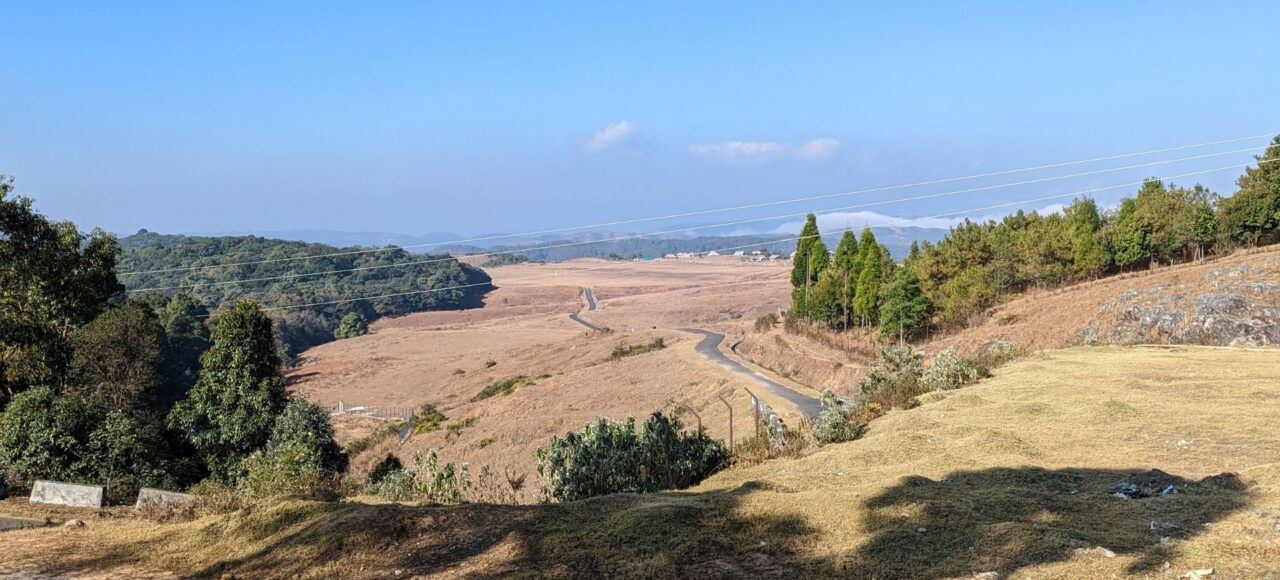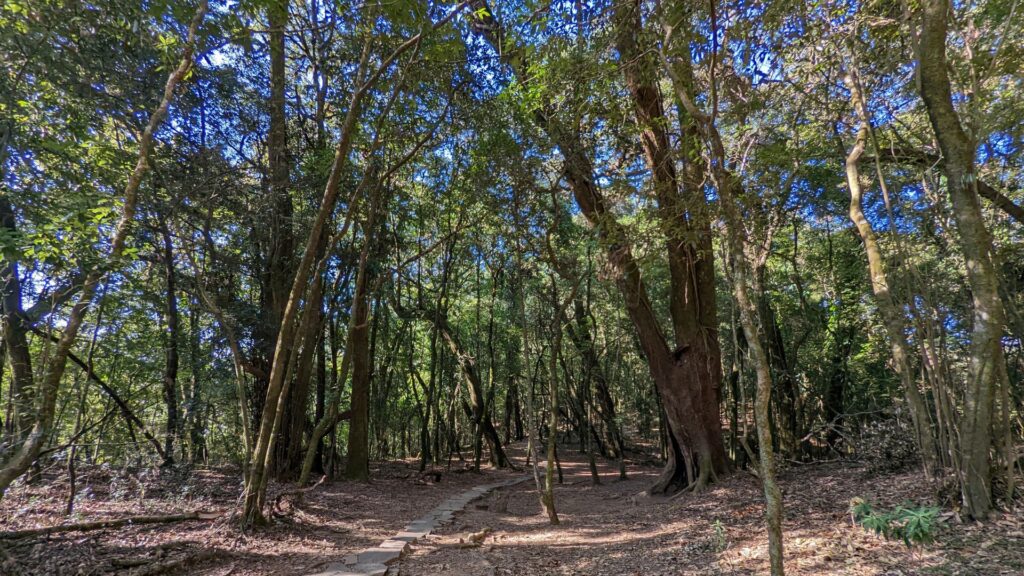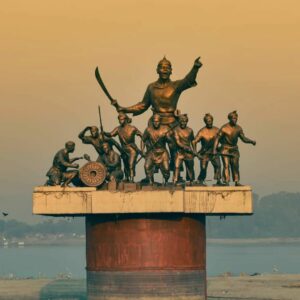
Table of Contents
The David Scott Trek is well known among seasoned and amateur trekkers and hikers. Stretching the Khasi hills of Meghalaya , the trek spans 16 kms starting from Mawphlang to Lad Mawphlang. Along the way, one comes across a variety of terrains – the rolling mountains, the community forests of Hima Mawphlang, the river Umiam flowing by in the valleys and lush meadows holding a diversity of ferns and medicinal plants.
What is little known about the trek is that it is a continuation of the historical trail of over 100 kms linking Guwahati with Slyhet (now, Bangladesh)- making it one of the first such constructed roads in the 1800s. Its cultural history, however, is closely tied to the advent of conquest and colonialism among the North Eastern Kingdoms of India.
Establishment of the Route : The History and aftermath of Anglo-Khasi Relations
The route was originally used by indigenous Khasis for travelling by foot or horses. The trail, however, went on to be named after David Scott – a British Administrator posted to the North East Frontier Assam between 1802 and 1832. He developed and built the existing horse cart road connection cutting through the forests of Assam and the Khasi Hills to establish trade routes between Assam and Bangladesh. The final trade route was close to 130 miles (209 kms) – a considerable feat at the time.

The Task of Gaining Permissions for Passage through the Khasi Kingdoms
Conflicting Views on the Entry of the British to the Khasi Hills

U Tirot's Turn and the Beginnings of the Anglo-Khasi Wars
Conclusion
Today, the over 200 km route is fragmented and frequented by trekkers, hikers and tourists. The most favoured section between Mawphlang to Lad Mawphlang is now known as the David Scott Trail. This historical trail has received its due recognition from the United Nations as an Indigenous Community Conservation Area (ICCA). The area is conserved and looked after by local communities such as the Mawphlang Welfare Society. There are strict regulations along the trail to keep the area sustainable and clean and to maintain and conserve the rich biodiversity along the trail. The main animal corridor cuts across the Community Forest of Hima Mawphlang towards the Mawphlang Sacred Groves making this a trail and route of great environmental and historical importance today.

Team ChaloHoppo
Anali Baruah writes on culture and tourism in north eastern regions of India. She is currently doing her PhD in Cultural Studies and works with Content & Research at ChaloHoppo.
With seasoned local guides, you can trek the David Scott trail or other trekking routes that are a part of the historical route in our upcoming set departures to Meghalaya.
Our Set Departures to Meghalaya
Our Short Escapes in Meghalaya
You may also like to read:



